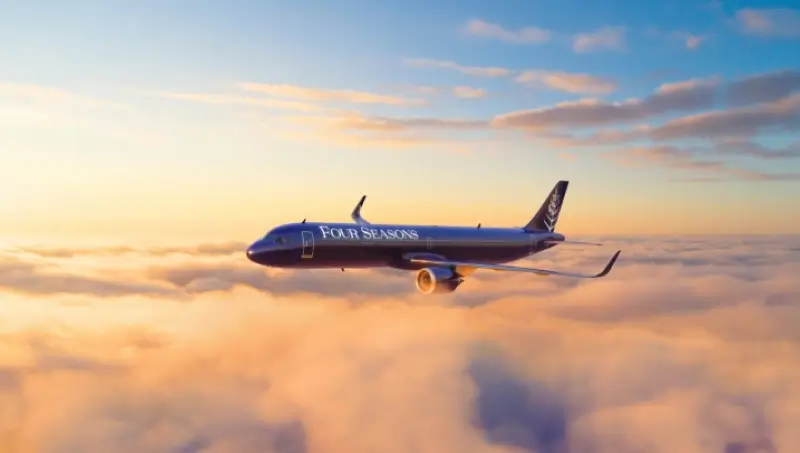
Maintaining TWA's Jetliners
Jan 19, 2016

Maintaining TWA's jetliners involved a comprehensive approach to ensure safety, reliability, and performance. Technicians conducted regular inspections, routine maintenance, and overhauls to address wear and tear on engines, airframes, and avionics systems. Adhering to strict regulatory standards, they utilized advanced diagnostic tools and techniques to identify potential issues before they became critical. The maintenance teams emphasized preventive care, ensuring that each aircraft remained in peak condition to meet the demands of commercial aviation. Training and adherence to best practices were crucial, allowing TWA to uphold its reputation for quality service and operational excellence throughout its fleet.
When it comes to the aviation industry, maintaining jetliners is a critical aspect that ensures safety, efficiency, and performance. TWA's (Trans World Airlines) jetliners, renowned for their reliability and comfort, required a robust maintenance program to uphold their reputation. This article delves into the various facets of maintaining TWA's jetliners, focusing on the key procedures, practices, and technological advancements that played a vital role in their upkeep.
Importance of Regular Maintenance
Regular maintenance of jetliners is essential for various reasons, including passenger safety, operational efficiency, and compliance with aviation regulations. TWA recognized that a well-maintained fleet contributes not only to passenger satisfaction but also to the airline's bottom line.
Maintenance Categories
Jetliner maintenance can be categorized into three main types: line maintenance, scheduled maintenance, and unscheduled maintenance. Each type serves a specific purpose in ensuring the aircraft remains in optimal condition.
| Maintenance Type | Description |
|---|---|
| Line Maintenance | Routine checks and minor repairs performed on the aircraft before and after flights. |
| Scheduled Maintenance | Comprehensive inspections and repairs conducted at set intervals, based on flight hours or calendar time. |
| Unscheduled Maintenance | Repairs needed due to unexpected issues or malfunctions that arise during operation. |
Key Maintenance Procedures
Maintaining TWA's jetliners involved a variety of procedures that encompassed different aircraft systems. Some of the key procedures included:
- Pre-Flight Inspections: Conducted by technicians to ensure that all systems are functioning correctly before departure.
- Engine Overhauls: Comprehensive checks and repairs on engines to maintain optimal performance and fuel efficiency.
- Structural Inspections: Regular assessments of the airframe to identify any wear and tear, ensuring the aircraft's integrity.
- Avionics Maintenance: Ensuring that all electronic systems are updated and functioning correctly to guarantee navigation and communication.
Technological Advancements in Maintenance
Over the years, TWA invested in technological advancements that revolutionized jetliner maintenance. These innovations not only improved efficiency but also enhanced safety protocols. Some notable advancements included:
- Predictive Maintenance: Utilizing data analytics and AI to predict potential failures before they occur, allowing for proactive measures.
- Automated Inspection Systems: Implementing drones and robotic systems to conduct thorough inspections of hard-to-reach areas.
- Digital Maintenance Logs: Transitioning from paper logs to digital systems for better tracking and management of maintenance records.
Staff Training and Development
One of the pillars of maintaining TWA's jetliners was the continuous training and development of maintenance staff. Ensuring that technicians were well-versed in the latest technologies and maintenance practices was crucial. TWA invested in:
- Certification Programs: Offering extensive training programs that provided technicians with the necessary certifications to work on various aircraft systems.
- Workshops and Seminars: Regularly hosting workshops to keep staff updated on new technologies and best practices in the industry.
Regulatory Compliance
Adhering to aviation regulations set forth by organizations such as the FAA (Federal Aviation Administration) was paramount for TWA. The airline implemented rigorous checks to ensure compliance, including:
- Regular Audits: Conducting internal audits to verify adherence to safety standards and maintenance protocols.
- Reporting Systems: Establishing transparent reporting systems for any maintenance issues or incidents to ensure accountability.
Conclusion
Maintaining TWA's jetliners was a multifaceted process that involved rigorous procedures, technological innovations, and a commitment to safety and compliance. The airline's dedication to maintaining its fleet ensured not only the safety of its passengers but also the longevity of its aircraft. As the aviation industry continues to evolve, the lessons learned from TWA's maintenance practices remain relevant for airlines striving for excellence in aircraft maintenance.
Related Articles

Explore Thailand: The Best Islands to Visit for Paradise, Adventure, and Relaxation

The Ultimate Guide to the Best Islands in Thailand for Your Next Getaway

Do babies need passports? How to get a passport for a newborn

How to get a U.S. passport fast: here’s how to expedite the process

What is Mobile Passport Control: 5 reasons why you should use it

SENTRI vs. Global Entry: A detailed guide

Do you need a passport to go to the Bahamas? Let’s find out

Do you need a passport to go to Mexico? A detailed guide

Do you need a passport to go to Canada? We got the answer

Do You Need a Passport for a Cruise: An Essential Travel Guide

Booster Seat Requirements: All the Rules to Follow in Your Rental Car

What Are the World’s Most Powerful Passports, and How Does Yours Rank?

How to Take a Passport Photo at Home: A Helpful Guide

You've got to have heart! Southwest's new livery

Your opinion: Should water be free on low cost carriers?

Young women bolder than guys as solo travellers
